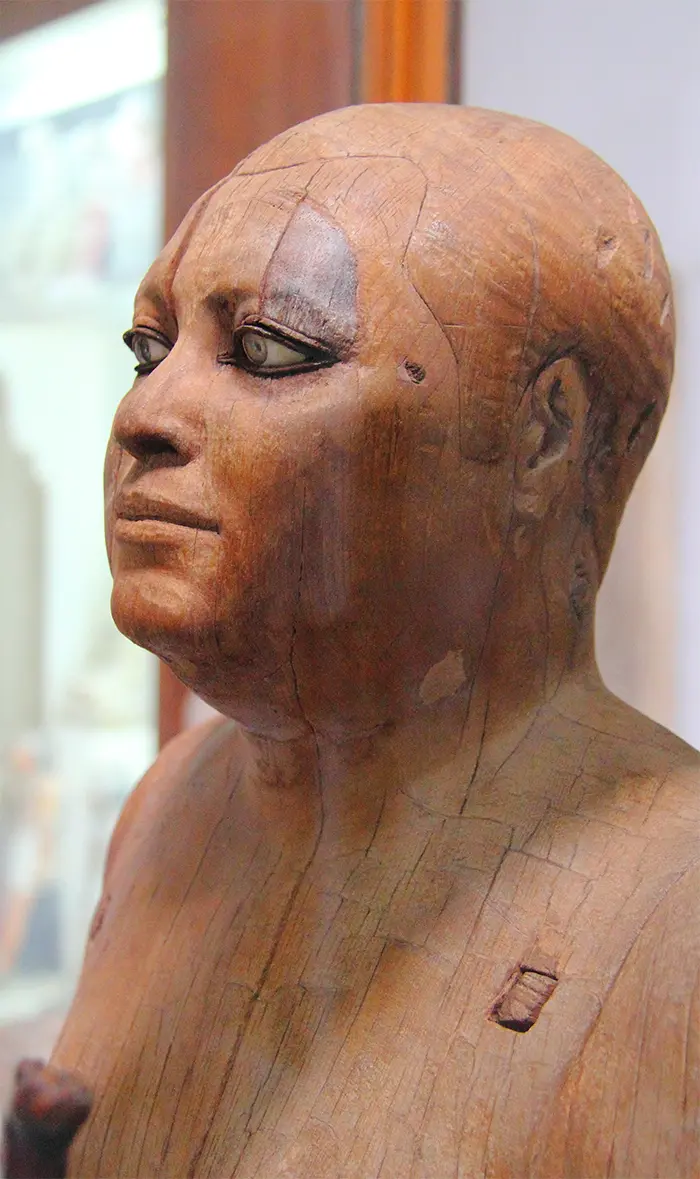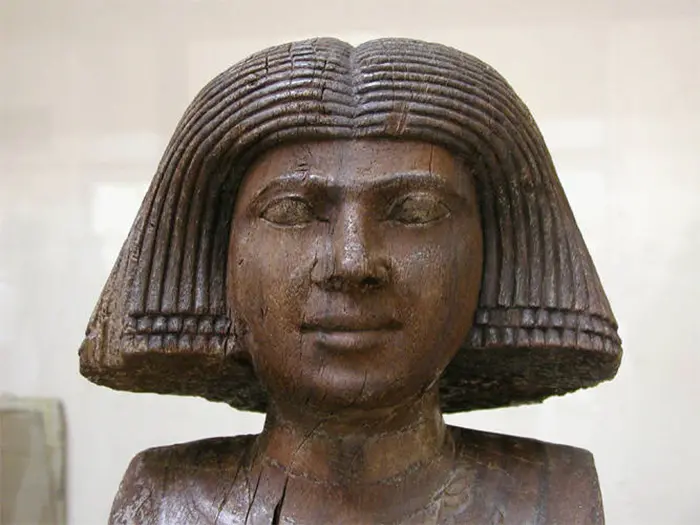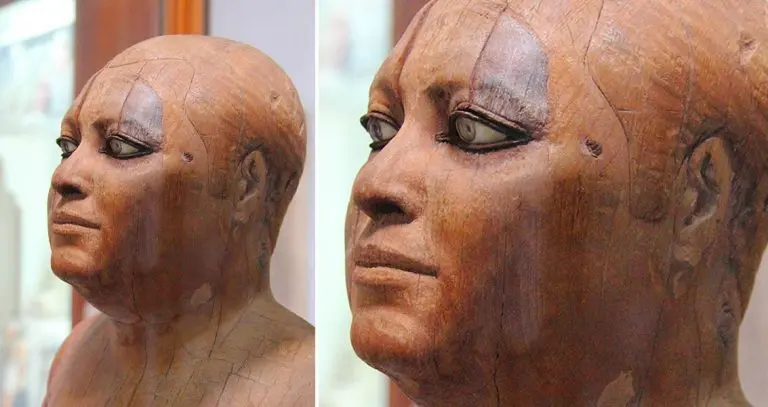Beautiful, youthful, strong – most ancient Egyptian sculptures of royalties and high-ranking officials depict the ideal look and body that we could only dream of. But Kaaper statue is unlike any other Egyptian sculptures we’ve seen before. The depiction of this mysterious ancient Egyptian scribe and reader-priest is apparently far from the usual ‘perfect-look’. But these imperfections are what make this sculpture special and most unique from all other discoveries.
The remains of ancient Egypt’s monumental craftsmanship are evident through their long-standing pyramids, sculptures, tombs, and temples. Egyptian sculptures are specifically highly symbolic and generally characterized by idealism to depict kings and privileged officials the way they wanted to be depicted, not the way they actually look. In other words, most ancient Egyptian sculptures were not intended to be realistic. They were rather created for political and social reasons which end goal was to make the royalties and affluent class appear perfect in the eyes of the people.
The Kaaper Statue Is Famous For Its Life-Like Details

However, the discovery of Kaaper statue was a proof that realism did had a place in ancient Egyptian art. The wooden sculpture, which was found in great condition in his tomb in the Saqqara necropolis, portrays an exceptionally realistic figure of a man who have lived in the late 4th Dynasty. It depicts a corpulent man without a toned body or chiseled jawline. Rather than the usual stern expression, he has a peaceful face bearing a friendly smile. All of his realistic facial features seem to come alive even more thanks to his life-like eyes which are inlaid with calcite, rock crystal, and black stone outlined with copper.
View this post on Instagram
View this post on Instagram
View this post on Instagram
Most of ancient Egypt’s splendid handiwork are built out of the most durable of all building materials – stone. So, this explains why these architectural masterpieces, which was made 5,000 years ago, have steadily stood the test of time. But the same can’t be said for their wooden sculptures. Apparently, wood doesn’t last as long as stone. Many wooden sculptures made by ancient Egyptians have disintegrated through time. Kaaper statue was one of the few surviving wooden sculptures that have withstood time.
Kaaper Statue Was Carved From Sycamore Wood And Was Made Around 4,500 Years Ago
View this post on Instagram
View this post on Instagram
View this post on Instagram
The wooden sculpture was originally plastered and painted but the outermost layer had disintegrated over time, exposing the high quality sycamore wood which was perfectly preserved. Although little is known about Kaaper, the fact that his image was depicted realistically only means that his rank wasn’t among the highest. Discovered by French archaeologist Auguste Mariette, it is said that the Egyptian diggers were astonished by the striking resemblance between the statue and their mayor. So, they initially called it Sheikh el-Balad (Arabic for ‘mayor or town leader).
View this post on Instagram
View this post on Instagram
View this post on Instagram
Kaaper statue stands 3.67 feet tall and is represented in a striding pose with his left hand holding a staff. Another wooden sculpture was also found from his tomb. She is commonly thought to be Kaaper’s wife. Both statues are now on display in the Cairo Egyptian Museum.
Statue Of Kaaper’s Wife

Both Statues Are Located In Cairo Egyptian Museum
View this post on Instagram
Learn more about this impressive ancient wooden sculpture on the video below

